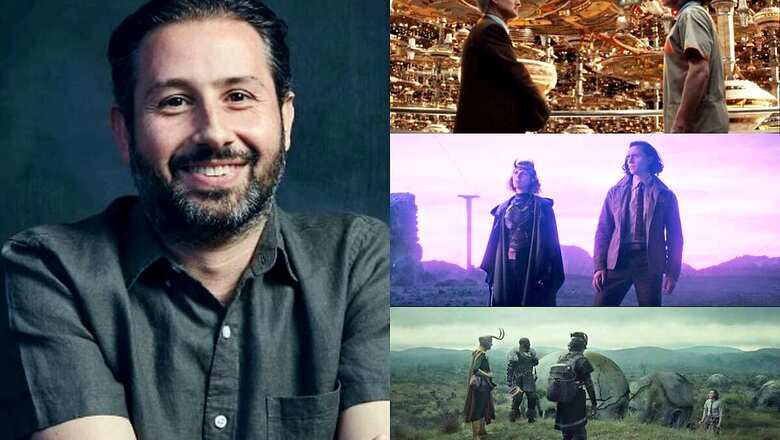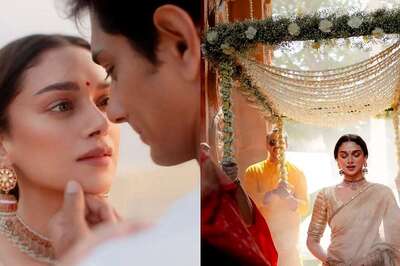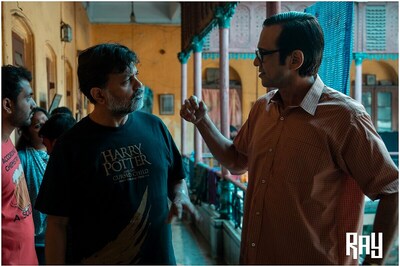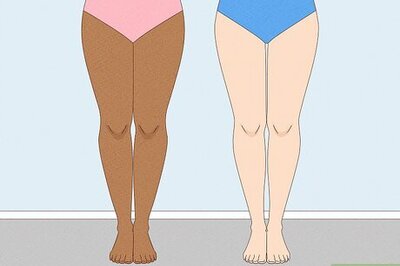
views
The Marvel Cinematic Universe Phase 4 show Loki, starring Tom Hiddleston as the eponymous God of Mischief, has acquired a massive fan base of its own, since its premiere in June. Throughout the first five episodes of the series, we saw Loki’s story play out in different worlds at different times. We also found out that God of Mischief existed in these worlds in several shapes and forms, including and not limited to, an alligator.
Now, ahead of the highly anticipated finale, we spoke to Kasra Farahani, the production designer of Loki, who created and built these worlds for the show. Apart from the show, he has also worked in Black Panther, Captain Marvel and Guardians of the Galaxy 2 for Marvel Studios. He is also the director of Moon, Concerning the Bodyguard, The Good Neighbor and Tilt. In an interview with News18, Farahani talked about the various inspirations behind the look and feel of Loki, as we now see it on television.
Talking about how he came to be a part of Loki, Farahani said, “I had worked on several other Marvel projects over the years, both as a concept illustrator, which was my initial position in the art department, and also as an art director over a couple of projects. So I was familiar with this world and when I heard about the project I was really interested to meet about it and discuss it. When I was sent the initial material for my interview, I was amazed at the breadth and variety of the really interesting worlds that the story took place in. My initial interview was with Kate (Herron), our director and Kevin Wright, our creative producer. It became clear very quickly that our references were very much in sync. We were pulling from the same popular culture high points and the same kind of visuals.”
Talking about the initial process of production design for Loki, he said, “The scripts offered a huge kind of guidance, in terms of what the different world should achieve from the story standpoint and how they should feel emotionally. Our job was then to translate that into images and worlds in which these characters could move and have these emotional experiences.”
Throughout the episode, we get to see Loki’s story take place in different places, or worlds, as Farahani calls them. For the first couple of episodes, we experience the TVA or Time Variance Authority, where those who disturb the ‘Sacred Timeline’ are tried and tested. We then go to different apocalypses in the universe, including Lamentis 1, a planet about to destroyed by the moon. In the fifth episode, we find out that everyone who has been ‘pruned’ or deleted by the TVA go to a void, a place guarded by a demonic entity.
Farahani talked about the process behind the creation of these different worlds. He said, “For the TVA, there was a very helpful and concise description in the original script material that I received, which was basically Mad Men meets Blade Runner. Which immediately gave you a good picture of what we were trying to do. It evolved beyond that to include a lot of more anachronistic references. This is where Terry Gilliam’s work became a very important source of research for us. He, especially in his film Brazil, has this amazing quality of combining elements of the future and elements of the past, as well as elements of the present that aren’t accurate but somehow feel real.
“Also, visually for the TVA, there was a lot of inspiration taken from the post-war Mid-century modern designs of buildings and architecture. I grew up on the West Coast of the United States in Southern California. This was an area where there was a heavy architectural boom, and a population boom in the post-war era. So there was a lot of mid-century modern institutional architecture. The schools that I attended, the post-offices, all have this kind of minimalist institutional architecture. We combined that with the Brutalist architecture that Kate, our director, lived among, in England. There we had the beginning of the monolithic architecture of the TVA.”
He further added, “For the void, that was very much inspired by a place that Kate had visited as a child, the moors in England. Also narratively, this was meant to feel like a melancholy, isolated and lonely place where things had been deleted and pruned from all of time and realities. They could not be more discarded than in the void and hence it was meant to feel very isolated. We began the process of finding things that were aberrations from history, things that couldn’t have existed or they would have changed the course of history. That is why they were deleted and that is why they were in the void.”
One of the most celebrated episodes of Loki was Lamentis, where the God of Mischief comes out as bisexual, making him and Sylvie the first official queer characters of the MCU. Fans on social media pointed out how the episode was shot in ‘bisexual lighting,’ i.e. the palette of the episode was hued in purple, pink and blue. Was it was a conscious decision as a nod to their sexuality?
“What I can say is that the palette was heavily informed by the source material. So Lamentis I in the comics has this colour to it. So that was the primary starting point of this palette. But with that said, there was a lot of effort made to design the world in such a way that it was at once familiar to us and different to us. I know that Christine Wada, our brilliant costume designer, did a great job creating a cast of characters that had very strong feminine and masculine elements present in them. For us, I would say, no, the palette of the episode was primarily motivated by the source material and by the story. That is the number one cause of that,” he shared.
The MCU has a very powerful fan-base and Loki is one of the most beloved characters in it. When asked if it was challenging to work for a show which was scrutinized to the last detail by millions of people, he said, “It was absolutely challenging for the sheer amount of work but I can also say that it was a dream job. This is exactly what you want. If you are going to work for months and months to build all these worlds, the best thing you can hope for is that the audience is eager to receive it, absorb it and enjoy it for themselves. For them to spend time in the world and scrutinise it, and create a lore of their own. This is the best outcome we can hope for, for anybody who is doing world building.”
“It was a collaborative effort from so many talented people, including our department heads, our cinematographer Autumn (Durald), Kate our director, Kevin our Creative Producer. As much as the work was, and dealing with the parameters of 2020, from a personal level, I can say it was a dream job,” he said.
Directed by Kate Herron and created by Michael Waldron, Loki stars Tom Hiddleston, Sophia Di Martino, Owen Wilson, Gugu Mbatha Raw and Wunmi Mosaku in pivotal roles. Loki is available to stream on Disney+ Hotstar Premium and Disney+ Hotstar VIP.
Read all the Latest News, Breaking News and Coronavirus News here.



















Comments
0 comment